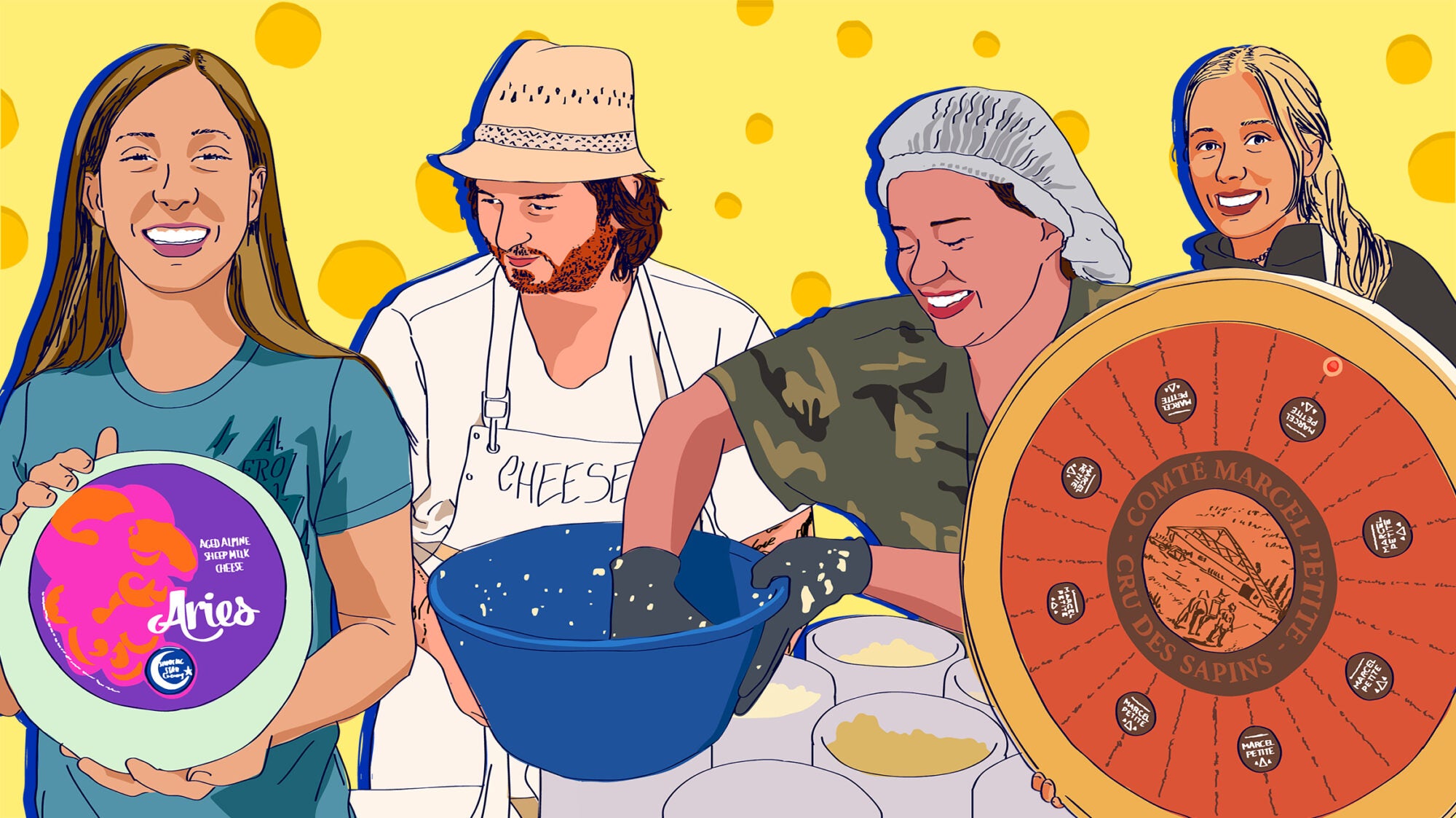
A new era of cheese rebels is cracking the code on wonderfully weird, climate-friendly, and Instagrammable dairy.
Avery Jones, 20, grew up among the clatter of cheese carts and the nutty scent of aging rooms, the rhythm of her parents’ creamery in Paso Robles, California, woven into her childhood. From the time she could walk, she helped package cheeses and played in the shadow of her family’s ambition. But for much of her adolescence, Jones’s dreams drifted elsewhere—she spent her nights stargazing, imagining a world far beyond the farm.
Jones changed her mind in 2019 when her father, Reggie, identified a gap in the local market: Alpine-style sheep’s milk cheese, which requires eight months of aging. The few other creameries in the area avoided sheep’s milk and leaned toward cheddar and brie-style cheeses, which have a comparatively larger yield and a less meticulous aging process. Jones, then only 15, started making harder-to-come-by cheeses herself to help pay for college.
She called her company Shooting Star Creamery, a nod to her favorite hobby and “a play on shooting for the stars,” Jones says, as it seemed far-fetched that her cheese could ever win any awards. But the same year she opened Shooting Star, its first creation, Aries, a traditional Alpine-style cheese with “notes of buttermilk and pineapple,” came in third place at the American Cheese Society awards, run by a nonprofit trade group and considered the Olympics for cheeseheads.
Jones was the competition’s youngest top placer to date, outshining more than 1,700 entries. And while the average American cheesemaker is 41 years old and male, a growing wave of 20-somethings is reshaping the ancient trade by making and selling cheese—blending sustainability, accessibility, and the energy and eccentricity of an increasingly online age.
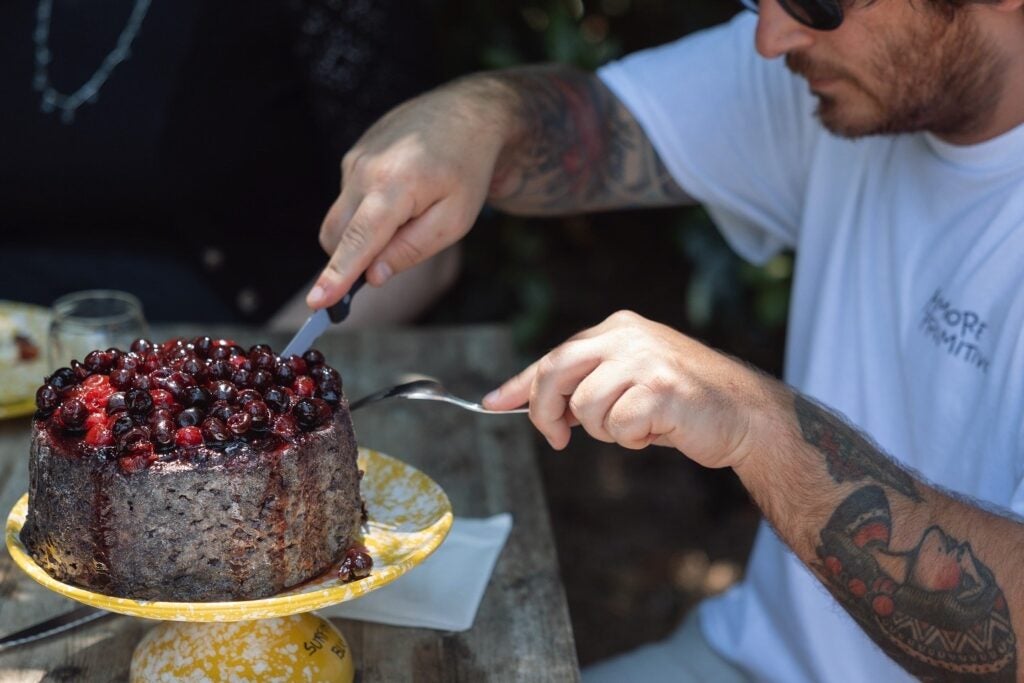
In Puglia, in Southern Italy, Vito Dicecca, 39, opened Baby Dicecca, a cheese bar and extension of his family’s 117-year-old cheese shop Caseificio Dicecca, in 2020.
If Napa Valley is wine country, then Vermont is Cabot country. Named after Cabot, Vermont, the world-famous cheddar is made by a farmer-owned cooperative with over 1,100 member farms on the East Coast. Established in 1919, the company, valued at $5.96 billion, has eclipsed small, independent cheesemakers for years. But 27-year-old Kayleigh Boucher, a cheesemaker at Green Mountain Blue Cheese in Highgate, Vermont, is excited by new types of cheeses that a constellation of “tiny makers” from that state are creating.
Boucher grew up in the suburbs of Massachusetts and moved to Boucher Family Farm, her aunt and uncle’s farm in Vermont, in 2021 after graduating from Amherst College. Her great-grandfather Dan Boucher originally set up the farm in Canada in the 1930s. Her aunt Dawn started Green Mountain Blue Cheese in 1999 as a self-taught maker, becoming one of the first artisanal blue cheese producers in the state.
Boucher began helping her aunt and uncle to reopen the farm when it closed down during COVID and then fell in love with cheesemaking. Now she hopes to take over the business someday. “I felt like I was meant to do this all along,” she said.
The farm’s signature French-style blue, Boucher blue, is its most popular, even winning second place in the molded blue category at the 2024 American Cheese Society National Judging and Competition event in Buffalo, New York—the only blue cheese from Vermont to do so. Then there’s the Gore-Dawn-Zola, a buttery Italian-style blue named after her aunt Dawn, since “Gorgonzola” is a protected name. Finally, there’s a “very approachable” blue that’s aged longer than others. It’s named Madison, after Boucher’s niece, and it has a drier texture and more time to develop a wider range of flavors instead of the straightforward, confident funkiness associated with blue cheeses, Boucher explained.
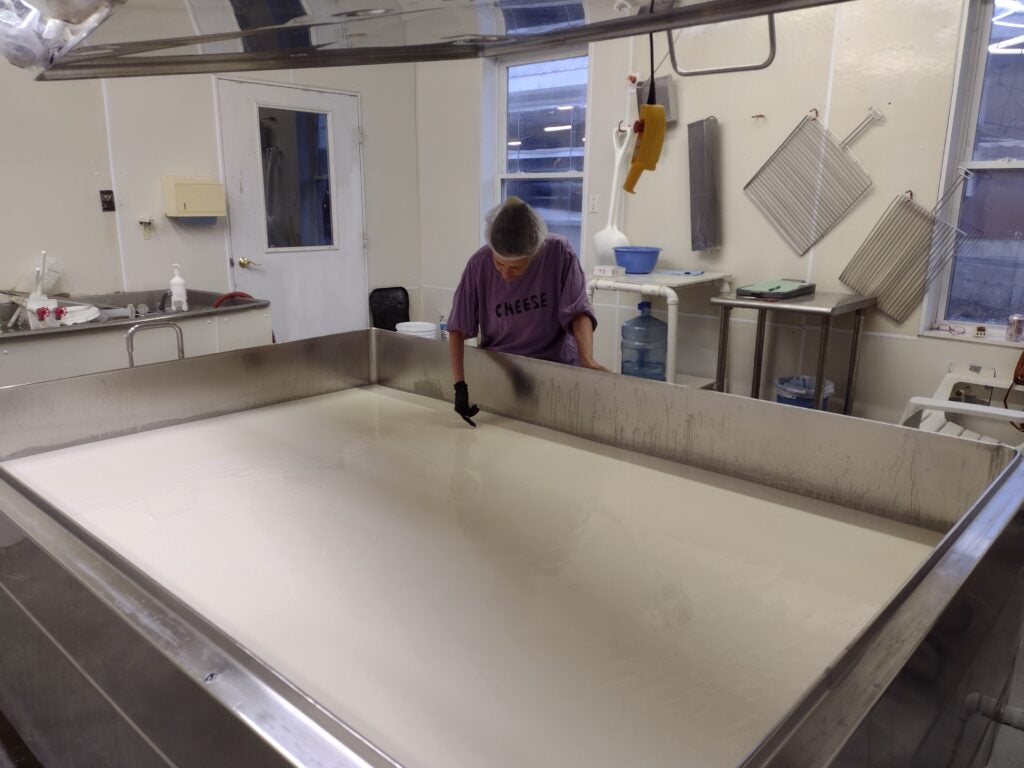
Kayleigh Boucher, a cheesemaker at Green Mountain Blue Cheese in Highgate, Vermont.
Out of the 200 cows the family owns, Boucher’s favorite is a Jersey named Poppy who likes to be petted like a dog. During milking, Boucher blasts Taylor Swift, especially “I Can Do It With a Broken Heart.” “I think everyone, including the cows, is in a better mood when she’s on,” she says.
Boucher believes that the next generation of cheesemakers is turning the industry into a more inclusive space, particularly for queer individuals. “As a queer person myself, a lot of the younger cheesemakers I meet are women and part of the LGBTQ community,” she said. Out of the roughly 10,000 cheesemakers in the United States, 76.5 percent are men, while only 23.5 percent are women.
But not all young people who love cheese are interested in making it. Some are drawn to the fields of cheese expertise, such as cheese mongering, mastering cheese pairings, and judging cheese competitions (a dream job for people of any age).
Madelyn Varela, 24, grew up in Arizona wanting to become a farmer and eating “shitty brie.” At the age of five, she drew what she wanted to be when she grew up: a farmer with cows. After graduating from high school, Valera began her career at a dairy farm in Fountain Hills on the outskirts of Scottsdale, but she soon found herself captivated by what could be created from that milk and began experimenting with cheese recipes. By 19, she had registered herself with the American Cheese Society, hoping to become a bona fide, nationally recognized cheesemaker. A year later, she traveled to farmsteads across the country to learn esoteric cheesemaking techniques, like smoking and lactic acid fermentation.
The following year, just as her contract was ending, Valera sought a job that offered her more flexibility. Cheesemaking can be physically demanding, especially if you’re working with livestock. “I was looking for a different pace, but within the cheese industry,” Valera said, “so I decided to use my knowledge of the science behind cheese to help me sell it.”
Valera now works as a cheesemonger at Heinen’s, a Cleveland-based specialty grocery store, and shares her knowledge with over 200,000 followers on TikTok and Instagram as @cheezytalkwithmadelyn. She believes that her generation is challenging traditional cheese pairings. Interestingly, in the wine world, too, many young people are now rejecting formulaic pairings. “Some of us in the cheese industry, particularly the older generation, often make it out to be this pretentious fancy food,” she said, “But if you were to look at the history of cheese, it was peasant food, first made by accident and then made out of necessity.” She added, “We only started putting odd rules around it once the aristocrats realized how delicious it was.”
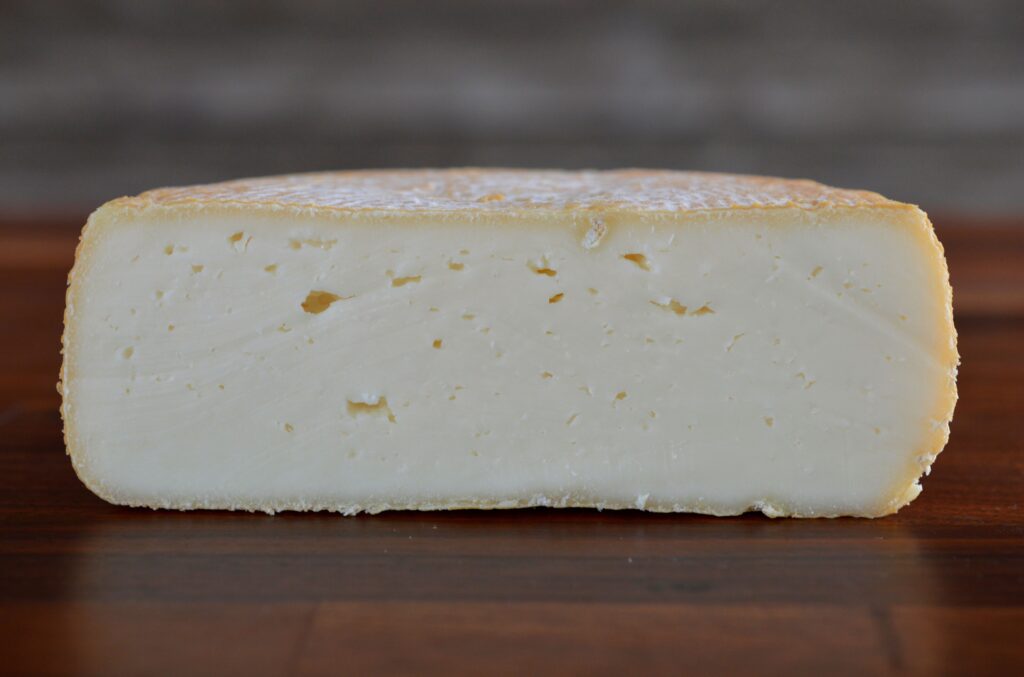
A cut of Leo from Shooting Star Creamery.
Now Valera is on a mission to subvert the stereotype through a medium that speaks to people her age: TikTok. On her series “Unhinged Pairings,” which boasts over 7 million views, Valera explains each cheese’s profile as she swipes OG Kristal, a 22-month aged gouda, onto Samoa cookies, and La Tur, a tangy brie, onto sour gummy worms. She believes that wine and cheese shouldn’t be reserved for grown-up events and art galleries, that you can cut into a nice cheese with whatever you have at home, and that a bag of Cheetos has as much potential as a spread of charcuterie.
Her favorite cheese is the Negroni blue cheese from Moro Formaggi in Italy, which is soaked in gin, sweet vermouth, and bitters for two months and topped with candied orange peels. The cheese comes soaked in syrup and invites questions from younger commenters such as “Can this cheese get you drunk?” It doesn’t, but it definitely won over said commenter. Valera recommended pairing the cheese with a Negroni, orange Moscato, or orange soda for an alcohol-free option.
Valera noted that, along with being more experimental with cheeses, younger people in cheese are embracing a more ethical framework. “We’re able to see firsthand how climate change is affecting our industry,” she said. “Even these old timers are starting to realize that our planet is changing, and we need to start changing too.”
For instance, farms like Vermont’s Shelburne Farms are looking at ways to enhance soil carbon sequestration to achieve carbon neutrality by 2028. Similarly, Vermont Creamery is working with Vanguard Renewables to turn food waste into renewable energy, which helps reduce the carbon footprint of its operations. These practices include rotational grazing to protect topsoil depletion and installing solar panels at creameries, Valera said, adding that many creameries now get their milk from farms closest to them to reduce trucking emissions. “It can be financially taxing,” she added. “But it’s the only way to move forward.”
“As a queer person myself, a lot of the younger cheesemakers I meet are women and part of the LGBTQ community.”
Kayla Fuerstenau is a 26-year-old cheesemonger at Hilldale Metcalfe’s, a specialty grocer in Madison, Wisconsin. She is also a graduate of Cheese State University (CSU), a free program for cheese professionals self-dubbed the “Ivy League of cheese education” in Wisconsin, which is often called the Cheese State for inventing Colby, a milder, creamier version of cheddar. Fuerstenau believes that the future of cheese includes more sheep, goat, plant-based, soft, and buffalo milk cheeses—since they require fewer resources such as less feed, land, and water, and have a smaller environmental footprint.
She added that while her favorite cheese “changes as often as the weather in the Midwest,” it’s currently the buttery and sweet Rispens Sheep Gouda by L’Amuse. Along with CSU, Fuerstenau said she has learned a lot about pairings from educational cheese-cutting videos like Varela’s. “It’s very refreshing to see others my age teaching people about the wonderful world of cheese,” she said.
Over in Middletown, Wisconsin, Bethany Johnson is a 25-year-old dairy product technologist at Foremost Farms, a licensed cheesemaker and grader. Johnson, another CSU alumnus, knew she wanted to work in cheese ever since she took a fermentation science class in college. She believes previous generations laid the foundation for a sustainable, equitable industry, and it’s up to young cheesemakers to carry it forward.
“As a young woman starting in the cheese industry, I was surprised by how much mentorship I’ve found.…Cheese people are happy to teach and support anyone interested,” Johnson said. “I’m starting to see younger and more diverse judges at some cheese contests, which is great, and something I’d like to be part of in the future,” she added.
Across the pond, too, the casein kids are alright. In the Southern Welsh county of Monmouthshire, Lily Morris, 22, a cheesemonger at Morris’s of Usk, her family’s farm shop and cafe, knew early on that she was meant to work in cheese. Cheese and Marmite sandwiches were a fixture of her lunch boxes, and she recalls having constant headaches as a child. “The doctor said I was consuming too much cheese,” she laughs. “I was obviously meant to be in the cheese world!”
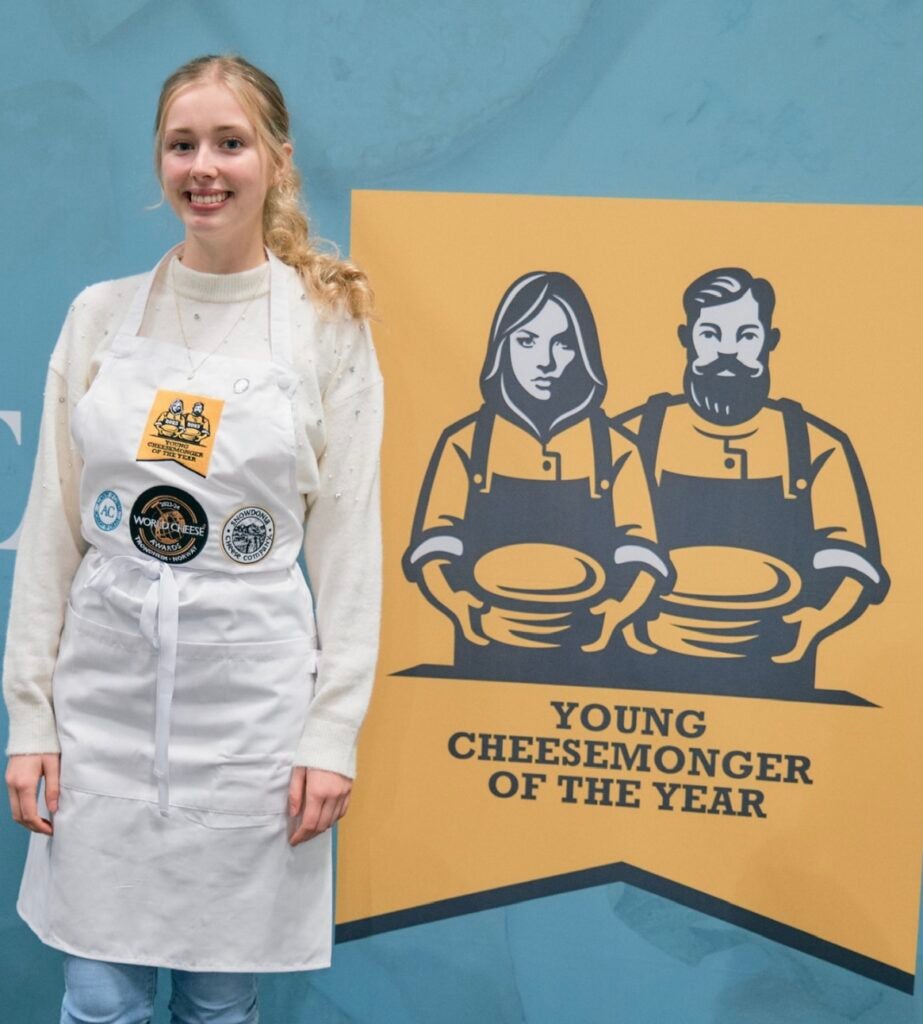
Lily Morris of Morris’s of Usk in the UK.
In 2022, when her family assigned Morris to manage their new deli and cheese department, she created the Instagram account The Petite Cheese. Online, Morris cuts into massive wheels of cheese on camera, reviews cheese-flavored snacks like Wotsits, an English version of Cheetos, and showcases “beautiful inside-out” cheeses, such as camembert wrapped in a parcel made of green garlic leaves, or a cheese called Alp Blossom that’s coated with edible flowers. Last year the Academy of Cheese named Morris the Young Cheesemonger of the Year.
In Puglia, in Southern Italy, Vito Dicecca, 39, opened Baby Dicecca, a cheese bar and extension of his family’s 117-year-old cheese shop Caseificio Dicecca, in 2020 “to highlight cheese as the star of the plate.” His siblings—Paolo, 42, Maristella, 34, and Roberta, 32—help run the shop. Vito recounts that it was decidedly “not cool” to grow up as the pastor’s son within a dairy farming family.
But in 2011, the then 24-year-old made a daring breakthrough with a masterpiece ahead of its time: Amore Primitivo, a blue cheese aged in Primitivo wine for 100 days and then crowned with a tangle of deep maroon cherries. While a wheel of Vito’s creation replaced the cake at his sister’s wedding that year, other family members weren’t convinced at first and even requested him to stop making it.
“I still remember the faces of older customers when they saw Amore Primitivo,” he said. “Customers who had been coming to our cheese shop for 50 years would joke, ‘Vito, this isn’t a pastry shop, it’s a cheese shop!’” Today it is the shop’s best-selling cheese and draws customers the world over, including Italian American heartthrob Stanley Tucci.
The shop and bar ensure transparency by sourcing milk from farms with a focus on animal welfare, Vito said, and by “being open about the care and time that goes into each of our cheeses.” His father, Salvatore, has hosted his Italian American friends since 1980 at the dairy to practice making mozzarella, stracciatella, and burrata, and in 2009, the Diceccas resumed this practice, hosting more than 100 interns from around the world.
“We see more young people pushing the boundaries of cheesemaking.…Each person always brings something new,” Dicecca said. For example, Cesar, an intern from São Paulo, came up with Nikka cheese, inspired by the Japanese population in his hometown and their smooth whisky. That cheese also includes Colombian coffee and candied figs made by Vito’s mother. “Innovation is important, but it should respect tradition,” Vito said. “I hope the industry can balance both to ensure that new ideas don’t overshadow the roots of the craft.”
Young people may not yet hold the reins of this ancient trade, but they’re driven by the untapped potential of cheese rather than convention—what cheese can become, not what it’s always been. “There are a few of us, but not nearly enough,” Morris said. “That’s why it’s important for me to keep posting about artisanal cheese, to hopefully inspire more young people.”
The cheese industry, for all its craft and tradition, has always been a bit strange, and it’s this delightful strangeness that welcomes the creative and the unique. Fuerstenau’s take is simple: “The cheese industry is open and safe for queer people and for eccentric people. Cheese is weird, and cheese people are weird.”